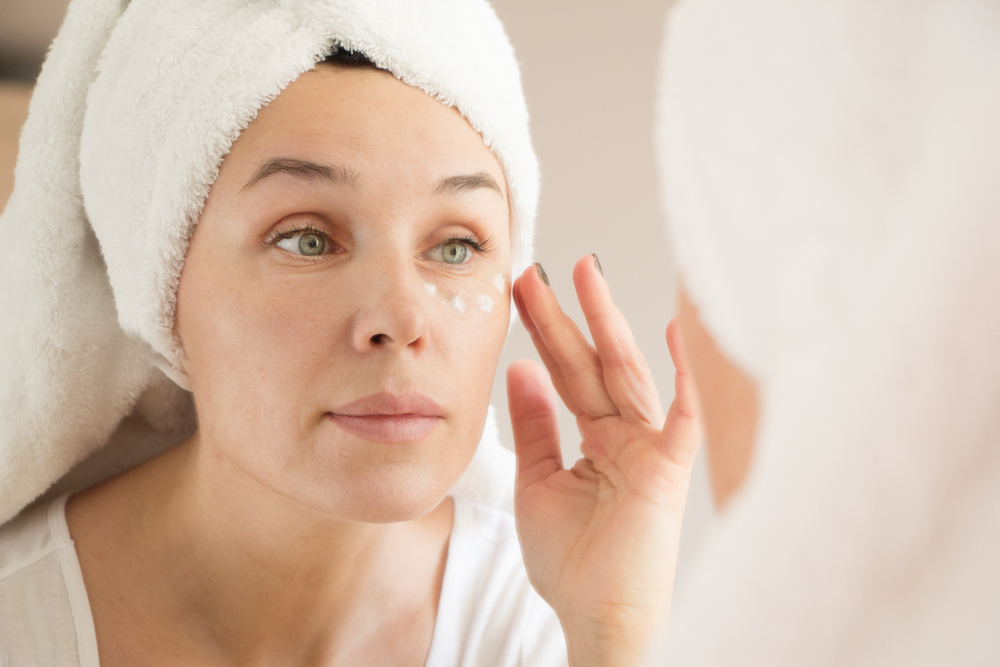Beauty products are a dime a dozen – most of the time you don’t even know what you should use how and for what purpose. We show how layering works, i.e. which products can and should be combined and how.
Layering: What is behind the care principle?
Different care products are combined in such a way that they optimally complement or even strengthen each other in terms of ingredients and effects. If the ingredients harmonize, the products can easily be applied one after the other.
Unfortunately this is not always the case. While the ingredients of rich creams are mostly fat-soluble, it is the other way around with lighter lotions: They mostly contain water-soluble ingredients.So if you apply a cream first and then a lotion immediately afterwards, crumbly cream residues quickly form on the skin – and you start all over again. Unfortunately, very few packaging have precise rules of use, usually only trying it out helps.
Apply Layering: How to do it
It is important that one product after the other is slowly and carefully worked into the skin. Only when product number one has been completely absorbed is it number two’s turn.
It is important that the first product is evenly mixed with the skin’s own lipids before the second product is applied to the skin. A sun protection product, for example, should be applied thirty minutes after the day cream
… says Professor Dr. Volker Steinkraus, head of the Dermatologikum in Hamburg.
Good to know: With layering, it is not a must that the individual products come from the same manufacturer. However, in most cases they are better matched to one another in terms of their combinations of active ingredients than a wildly jumbled product range. Professor Steinkraus explains:
Using cosmetics that come from one line ensures continuity in the stabilizers, emulsifiers and activating ingredients. Incompatibilities can also be better analyzed if the products come from the same line, as they usually contain similar active ingredients, such as the same antioxidant.
Which products should be used daily – and in which order?
The order in which the products are applied plays a central role. The first step – not surprisingly – is cleaning. “And that is even more important in the evening than in the morning,” says Professor Steinkraus. The following steps can be remembered in this order: toning, regeneration and tuning. Toning uses an alcohol-free toner or facial toner to remove the last traces of soap and at the same time prepares the skin for the next care step: regeneration. Serums are particularly suitable for this purpose. They have a particularly high concentration of active ingredients and have an intensive and direct effect. Thanks to their light texture, they also penetrate into deeper skin layers. Finally, it’s time for “tuning”: a face care product tailored to the skin type forms the final “layer”.
Tip: Facial care products that are not specifically designed for the sensitive eye area should not be used around the eyes. This is because our skin is particularly thin here, and cream residues quickly settle in the small wrinkles, which, if not removed, can cause skin irritation. So: always use a special eye cream!
Are there products that I should combine?
Yes, peeling and mask for example. Peeling allows the ingredients of a mask to have a much better effect on the skin. At the same time, the mask acts like a short-term intensive treatment after the peeling.
And what is there to consider when it comes to make-up?
Cleansing, toning, regeneration, tuning – they also form the basis for make-up. Melanie Schoene, Hair & Make-up Artist at Blossom Management, advises:
Before applying make-up, remove excess grease with a matting blotting paper. The make-up should match the day care: On fat-soluble creams apply fat-soluble make-up, on water-soluble day care apply water-soluble foundation. Liquid make-up is not at all compatible with creams containing silicones. In this case, it can happen that the make-up forms ugly flakes.
But what to do if the skin is tight in the afternoon despite rich morning care or feels dry? Thermal water spray is a great way to freshen up your face. The best thing is: You can simply spray the spray over your makeup.
Does my day cream with sun protection factor replace sunscreen?
“The problem is that most day creams do not contain a high UVA filter”, explains Professor Dr. Volker Steinkraus. “It is the UVA rays that are responsible for skin aging”.
And what if, after half a day in the office, I spontaneously decide to go to the beach or sit in an ice cream parlor?
Then you should definitely apply an additional sun protection, namely one that guarantees at least a sun protection factor of 30 against UVB as well as a very good UVA protection.
Unlike serum, however, the sun protection factor should not be applied over make-up. “When it’s time to go out into the sun: Take off your make-up and apply sun protection forty minutes before,” recommends Melanie Schoene. Wet wipes without alcohol are suitable for removing make-up. And in the summer, it’s best to keep them in your handbag along with sunscreen.

